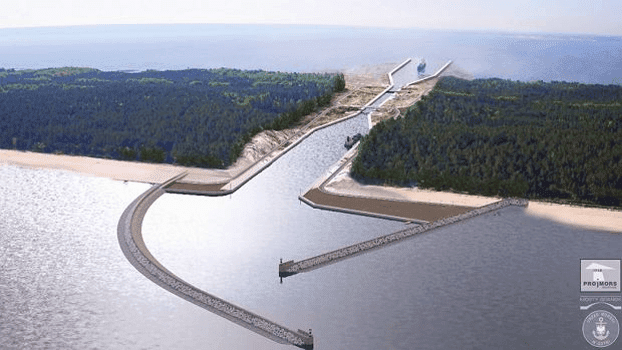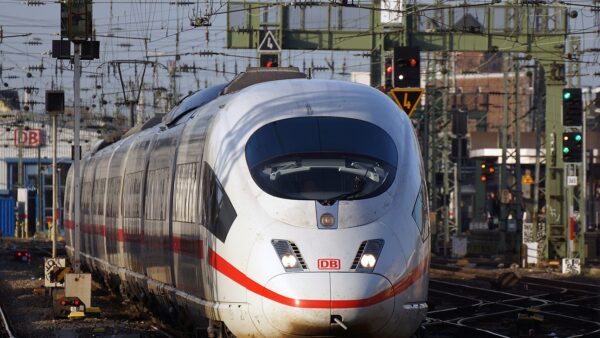Belgian contractor Besix has been picked to make a small but important change to the coastal geography of Poland by punching a hole through the Vistula Spit in Gdańsk Bay so ships will no longer have to sail through Russian waters to reach the Polish port of Elbląg.
The Vistula Spit (pictured) is a low-lying sand peninsula approximately 90km in length separating the Vistula Lagoon from GdaÅ„sk Bay in the Baltic Sea. Around 40% of the spit’s length is Polish territory, with the rest being part of the Russian Baltic enclave of Kaliningrad.
ElblÄ…g lies in the southwestern corner of the lagoon, which means that ships coming from the west must travel northeast to the Russian end of the spit to go through the lagoon’s only inlet, the Strait of Baltiysk, before turning southwest to get to ElblÄ…g.
The €187m contract announced 4 October sees Besix, in partnership with Polish contractor NDI Group, making a new channel close to ElblÄ…g, 1.5km in length and ranging in width from 25m to 120m.
Polish MPs first voted overwhelmingly to support the plan in February 2017.

Besix and NDI Group will build the channel, plus breakwaters, quays, locks, bridges and more (Courtesy of Besix)
The government hopes it will boost shipping to ElblÄ…g and stimulate economic growth although, without a programme of intensive dredging, the growth in shipping will be limited by the shallowness of the Vistula Lagoon and of the port’s fairway, which is listed as 2.5m deep.
The project has symbolic importance, however, as an assertion of independence from Russia. JarosÅ‚aw KaczyÅ„ski, the leader of Poland’s ruling Law and Justice (PiS) party, is quoted as saying last year that the channel demonstrates that “the times when the Russians dictated to us what we can and what we cannot do on our territory are over”.Â
The channel could also save Poland money since, according to the geopolitical intelligence publisher Stratfor, it has to pay navigation rights to Russia to use the Strait of Baltiysk.
In a press note to GCR, Besix said the project, awarded by Poland’s Maritime Office in Gdynia, includes breakwaters, quays, a channel, lock infrastructure with rotating bridges and sluice gates, buildings and roads, as well as an artificial island.
The infrastructure has been designed by engineering consultants Mosty Gdańsk and Projmors.

Render showing road bridges over the channel (Courtesy of Besix)
Work is expected to start in 2019 and be completed in 2022.
Besix said work would have to accommodate the breeding seasons for bats, birds and fish, while specially calibrated LED lights would be used at night to minimise disruption to nocturnal animals.
“The channel through the Vistula Spit is a major infrastructure which will generate important economic benefits for the Republic of Poland,” said Besix chief executive Rik Vandenberghe.
He noted that Besix and NDI Group worked together on building the Gdańsk Container Terminal.
Besix said artificial island of around 180 hectares will serve as a sanctuary for wildlife and migratory birds.
Top image: Landsat satellite image of the Vistula Split separating the Vistula Lagoon from GdaÅ„sk Bay in the Baltic Sea, with Russia’s Strait of Baltiysk visible in the northeastern segment (Public domain)










